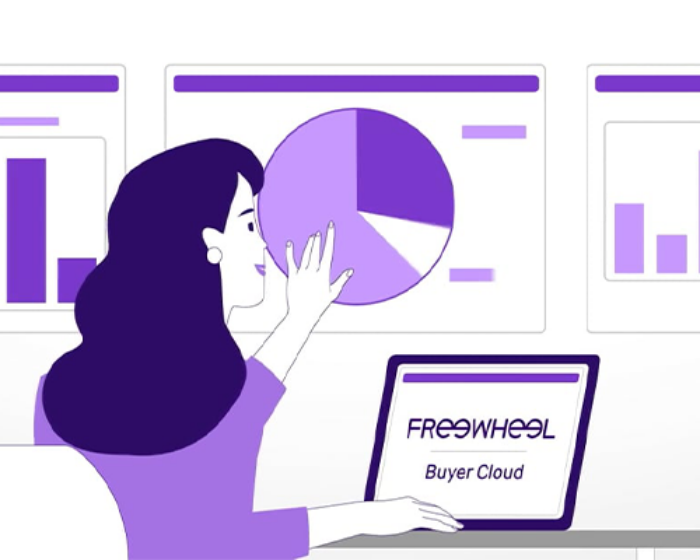Now is a critical time for the topic of identity; the looming deadline for third-party cookies is drawing near. Google initiated the process of deprecating cookies for 1% of Chrome browser users in January. This has created urgency for players across the advertising industry to rethink how to identify, reach, and measure results for their key target segments – despite the loss of critical data.
There is no one-size-fits-all approach to solving the digital identity challenge. Marketers and publishers must weigh all options and combine multiple solutions to continue running their businesses in Chrome environments – across desktop, mobile web, and TV. Advertising use cases dependent on third-party cookies (i.e., targeting, frequency capping, and measurement) will only be possible with alternative solutions such as Google Privacy Sandbox APIs, first-party identifiers, and universal identifiers. Contextual solutions – not reliant on cookies – are also being introduced as another approach to enable audience targeting based on the video content viewers are watching.
In response to changes in the identity space, FreeWheel is providing answers to the top questions we’re hearing from our clients and partners.
1. What is Google’s Tracking Protection feature, and how does it impact Chrome users, advertisers, and publishers?
Google’s Privacy Sandbox is a collection of APIs intended to enhance consumers’ online privacy by reducing tracking (via the deprecation of cookies, user agents, and IP addresses) and offering companies tools to enable advertising use cases. Tracking Protection is one feature among Google’s privacy efforts. It limits cross-site tracking, or the use of third-party cookies on Chrome.
Tracking Protection will bolster Chrome users’ privacy by preventing tracking across sites. It will introduce ad targeting and measurement challenges for marketers and publishers, as both communities have historically depended on third-party cookies to attribute purchases and other conversions to ad exposure. These challenges are the reason Privacy Sandbox was developed and why other AdTech companies developed their own privacy-conscious advertising tools and identifiers.
2. When can we expect complete cookie deprecation on Chrome?
Google has communicated that the deprecation process will be complete by the end of November 2024. The date of global deprecation depends on approval from the UK Competition and Market Authority (CMA).
3. What questions should marketers be asking their DSPs about data and identity solutions, especially regarding cookie deprecation?
- How are you facilitating scalable and efficient advertising given third-party cookie deprecation and related signal loss?
- How are you addressing the disappearance of third-party cookies in programmatic specifically, and how do you continue to share IDs in an open auction?
- What are you doing to mitigate signal loss and identifiers for delivery?
- How do you recommend measuring the efficacy of advertising and optimizing campaigns given signal loss?
4. What implications does Google’s cookie deprecation have across channels?
While Chrome cookie deprecation doesn’t impact Connected TV (CTV), there is a general trend of signal loss across the industry. Google’s deprecation of cookies also limits how advertisers can track across websites on mobile and desktop.
5. Do publishers have the same considerations as advertisers regarding identity resolution? What is top of mind for them?
Premium video publishers struggle with a unique challenge in the intricate Connected TV identity landscape. When sharing content across platforms, they lose direct connections with consumers in their Direct-to-Consumer (D2C) applications, disrupting the ability to maintain these ties. Publishers and marketers face common challenges in managing diverse and fragmented inventory pools and dealing with varied identifiers and supply sources. Unifying these elements is essential to better understand, reach, and measure the reactions of audiences in this complex environment.
6. What impact does Google’s activity with their phased cookie deprecation/API rollouts have here for buyers looking to target audiences?
FreeWheel is actively exploring optimal ways to support Privacy Sandbox APIs and other industry solutions. Timelines are designed to precede industry changes, providing ample time for client adoption.
We are also committed to maintaining audience targeting through several initiatives:
- FreeWheel Identity Network: Launched in Q4 2023, this is one of the most scaled identity graphs in the US. It allows clients with business agreements with 1P ID owners to access first-party identifiers on relevant inventory, ensuring availability even without third-party cookies.
- Universal Identifiers: We currently support LiveRamp’s Authenticated Traffic Solution with RampIDs in bid requests from our supply partners. We also support universal ID passthrough, which includes TTD’s UID2 and EUID, Blockgraph, ID5, RampID, Google’s PAIRID. We’re expanding our universal ID coverage globally based on market demand.
Both solutions will enable advertisers to take advantage of the largest possible amount of first-party data while also collaborating across data sets to facilitate targeting and measurement.
7. Beyond scale, what are the most critical features contributing to an identity graph’s effectiveness?
Identity graphs provide information about cross-device identity and facilitate the following:
- Onboarding customer relationship management-based (CRM) audiences
- Reaching audiences across devices and households more accurately
- Efficiently planning and forecasting
- Managing and reporting on reach and frequency
- Attributing outcomes to specific exposure events
To learn more about how to choose an identity graph successfully, download this guide: The Identity Graph of the Future.
The absence of third-party cookies presents challenges for the ecosystem; however, we’ve had plenty of time to prepare for the inevitable. FreeWheel has developed a suite of solutions fueled by unique data foundational to powering our platforms. Whether you’re a publisher or a marketer, FreeWheel has options to meet your unique needs, making addressable and measurable advertising at scale a reality for all. To learn more, please contact us at freewheelcommunications@freewheel.com.



